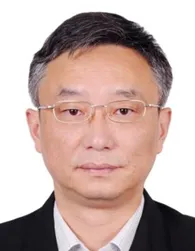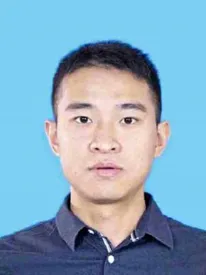
Lecture trailer | Fang Bin: "Research on new technology for semantic segmentation of medical images" and "Recognition of surgical video process based on deep learning"; Fan Junchao: "Living cell super-resolution microscopy imaging"
Lecture time
May 29, 2025 9:50-10:55
Lecture location
Conference Room 810, Building 1, Jinfeng Laboratory
Lecture Topic 1:Research on new technology of semantic segmentation of medical images
Lecture topic 2:Deep Learning of surgical video process
Introduction to the speaker

Fang Bin is a professor and doctoral supervisor at the School of Computer Science and Technology of Chongqing University, and director of the Institute of Pattern Recognition and Information Processing. The main research directions are: artificial intelligence, computer vision, pattern recognition, medical image processing, etc. IEEE Senior Member, a scholar in Bayu, Chongqing, and an outstanding talent in the new century of the Ministry of Education. Deputy editor-in-chief of SCI international journal "IJPRAI" and invited editor of SCI international journal "MPE". Member of the Chongqing CPPCC, Vice Chairman of the Chongqing Digital Medicine Society, and Secretary-General of the Chongqing Cognitive Science Society. "Credited Computing" academic leader of the Ministry of Education's key laboratory and "Software Theory and Technology" academic leader of the Chongqing Key Laboratory. He won 1 first prize in the Ministry of Education Natural Science Award and 2 second prizes in the Chongqing Natural Science Award. It undertakes more than 30 important projects such as the 973 project of the Ministry of Science and Technology, the Support Plan Project of the Ministry of Science and Technology, and the Natural Science Foundation of the Fund of the Committee. More than 200 SCI papers have been published. More than 10 authorized invention patents have been obtained.
Lecture introduction
Medical image semantic segmentation and intelligent analysis of surgical videos are important research directions for artificial intelligence to empower precision medicine. In recent years, it has shown great potential in the fields of tumor diagnosis, surgical navigation and prognosis evaluation. The application mechanism of artificial intelligence technology based on deep learning in tumor segmentation is complex and has not been fully understood. Professor Fang Bin’s team combines artificial intelligence technology and medical imaging information, and uses multi-dimensional imaging information and advanced image segmentation to deeply study the application mechanism of deep learning in tumor lesion segmentation to help accurately clinical diagnosis.
Lecture topic 3: Super-resolution microscopy of living cells
Introduction to the speaker

Fan Junchao, associate professor and doctoral supervisor at Chongqing University of Posts and Telecommunications, and a young scholar in Bayu, Chongqing. He is mainly engaged in research on multimodal image perception and characterization, and his achievements are applied to biomedical image analysis and image fusion. He has published more than ten papers as (co-)first author or correspondent author in high-level journals such as Nature Biotechnology and Nature Communications. He presided over 1 key research and development project of the Ministry of Science and Technology, 1 National Natural Science Foundation Youth Project, and 3 provincial and ministerial projects, participated in 1 original exploration project of the National Natural Science Foundation, and was authorized to 2 national invention patents. The Heisen structured light illumination fluorescence microscope developed is currently the fastest and most sensitive live cell super-resolution imaging technology, reaching the world's leading level and winning scientific research awards such as the "Top Ten Progress in China's Optics" in 2018.
Lecture introduction
The subcellular structure cannot be clearly observed by optical microscope due to the diffraction limit (~200nm). Although super-resolution microscopy technology achieves nanoscale resolution, live cell imaging still has problems such as high phototoxicity, slow speed, and difficulty in multimodal integration, and massive data lacks efficient analysis methods. Professor Fan Junchao’s team innovatively combines super-resolution microscopy and artificial intelligence technology, and through multimodal image perception and intelligent characterization methods, it realizes high-precision analysis and fusion of biomedical images, providing effective technical support for research in related fields.
- About Us
-
Research Platform
- Major Disease Sample Database
- Innovative Drug Verification And Transformation Platform
- Experimental Animal Center
- Life And Health Future Laboratory
- Biomedical Imaging Platform
- Cell Multi-Omics Platform
- Pathology Technology Platform
- Bioinformatics Research And Application Center
- Jinfeng Pathology Precision Diagnosis Center
- Research Team
- Information Center
- Join Us


 渝公网安备50009802002274
渝公网安备50009802002274